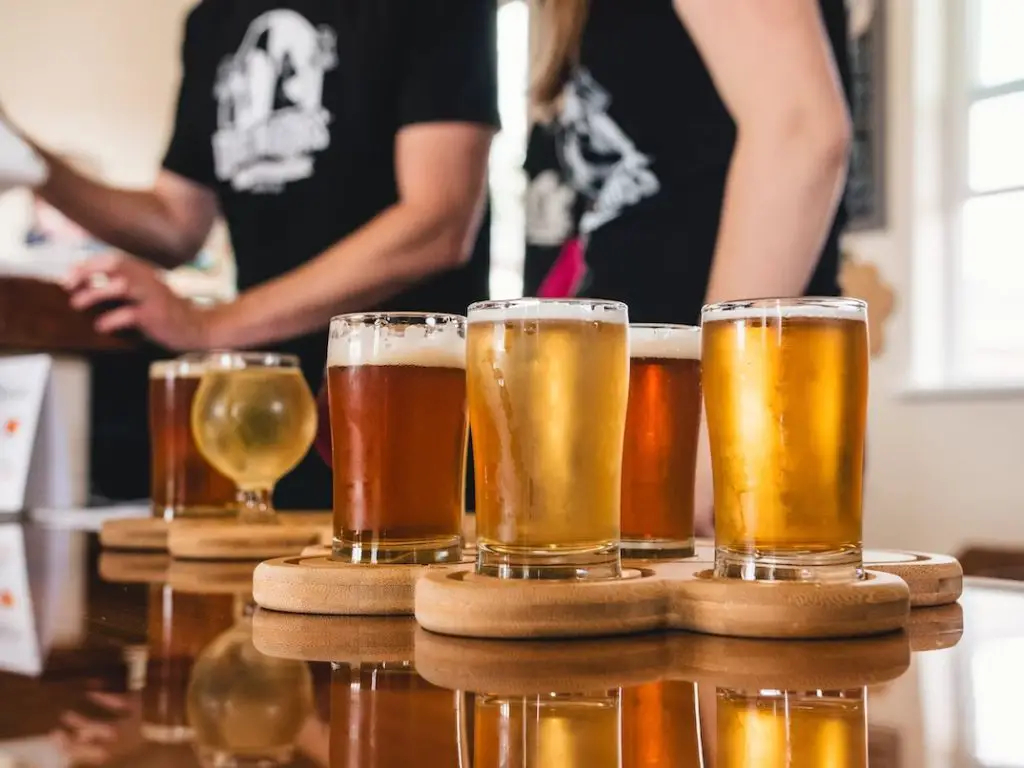Whether you’re a beer connoisseur or you simply love entertaining guests, beer brewing is an incredible hobby to get into. It also offers a unique way to connect with the growing craft beer scene, and potentially monetize your skills at some point down the road.
Are you dreaming of the day when you can savor your own home-brewed beer? If so, why not pivot from passion and turn that dream into reality?
As much as it might sound like rocket science to a beginner, brewing beer at home is actually simpler than it may seem. All you need is to take the leap well-informed, gear up, experiment, and practice some patience – and we could be looking at the next craft beer champ in some months or years to come!

Contents
- 1 Steps to Brew Your Own Beer
- 1.1 Procure the Basic Ingredients & Equipment You Need to Make Beer at Home
- 1.2 Learn the Three Steps in Brewing Beer: Mashing, Boiling, and Fermenting
- 1.3 Make Sanitation a Top Priority During Home Brewing Processes
- 1.4 Consider Trying Different Techniques, e.g. Dry Hopping to find Your Unique Taste
- 1.5 Stock Up On Supplies for Bottling and Kegging Your Home-brewed Beer
- 1.6 Give Your Brew the Chance to Age, and Enjoy the Delicious Reward!
- 2 Conclusion
Steps to Brew Your Own Beer
In this post, we shall discuss a few important steps you need to create your first (and successive) successful batch, from equipment and ingredients to techniques and processes, all the way to aging.
So strap yourself in as we take you through six simple tips that will help get you started down the path of becoming your very own home brewer.
Procure the Basic Ingredients & Equipment You Need to Make Beer at Home
Whether you’re a beginner looking to brew your first beer or a novice home brewer in search of new supplies, it’s easy to get overwhelmed. However, there are some basic items that every aspiring home brewer needs for their journey into creating delicious suds.
Start by getting some quality brewing grains, yeast extract, and hops from reliable sources. These three ingredients form the essential base for obtaining different types of flavored beer.
Secondly, ensure you have all the necessary equipment, including a mashing pot, brew kettle/boiler, fermenting bucket with lid, siphoning tubes, and bottles for each batch.
Lastly, obtain key hygiene tools such as sterilizers and cleaning agents. This will help create sound hygienic conditions (more on this later), which are vital during the beer production process!
Learn the Three Steps in Brewing Beer: Mashing, Boiling, and Fermenting
Making your own home-brewed beer requires a bit of know-how about mashing, boiling, and fermenting. Here’s a brief overview of these crucial steps.
- Mashing: During the mashing phase, you need to mash the grains with hot water at a precise temperature for several minutes. This allows enzymes present in the mashed grain to convert feedstock starches into fermentable sugars that will ultimately be used by yeasts to produce alcoholic beers or soft drinks. The following mashing comes boiling.
- Boiling: This is where you boil your ingredients together while being mindful not to over-boil them as this could damage vital proteins needed later on in the process.
- Fermentation: Finally, we go to fermentation, which is when the alcohol in beer is formed. Once cooled down, it’s time to pitch (i.e., adding) yeast extract for sustained growth within clean containers organized inside a brewing environment. Allow plenty of time here as this stage might take several weeks depending on the kind of beer you’re making and your desired characteristics.
Make Sanitation a Top Priority During Home Brewing Processes
Sanitizing home-brewing equipment and the surrounding environment thoroughly is certainly a must… sanitization and sanitation during brewing can never be overlooked! All areas and products that come into contact with your brew, including any utensils that may touch that may come into contact with ingredients should be cleaned each time before the next use.
This helps avoid contamination, which is one of the biggest enemies of beer production – food and beverage production for that matter.
For example, when starting out home-brewing, you will want to clean your utensils properly and thoroughly. Use hot water and soap on items like bubblers and spoons before every use to avoid contamination – which is one of the biggest enemies of beer production! It’s also important to make sure any leftover mashes are totally cleaned up too.
There are a few sanitation techniques you will want to ensure you execute correctly. Look into using products with calcium siphon technology for brewery safety protocols. For even deeper sanitization where required, alcohol-based solvents such as chlorine bleach or sulfuric acid are reliable options capable of eliminating most types of bacteria quickly if used safely.

Consider Trying Different Techniques, e.g. Dry Hopping to find Your Unique Taste
Experimenting with varied techniques to give your beer its unique taste can be an exhilarating experience. From playing around with wheat adjuncts for creamier wheat beers to blending malt extract for strong porters or stouts that require multiple kinds of malts the options here are limitless.
If you like your beers more flavorful, for instance, you can consider trying dry hopping. The process involves adding hops to the brew after fermentation, producing citrusy, piney, or other unique flavors depending on various factors – such as the type and amount of hops used, the temperature of contact, and contact time!
You might want to do research, experiment, and gain insights from expert brewers on dry hopping techniques if you want to make truly tasteful craft beers from home using this method.
Fermentation temperatures too can vary between brews and might affect the ultimate taste of your brew. For instance, temperatures slightly cooler than normal ranges (called lagering) often result in crisper brews.
While at it, be sure to research different home-brewing methods, such as extract brewing, all-grain brewing, partial mash, and brew bag brewing to see what suits your needs best.
Stock Up On Supplies for Bottling and Kegging Your Home-brewed Beer
It’s not enough to stop after fermentation has occurred, as you need to make plans for how to get the beer out of the fermenter and into your bottles or kegs. Keeping up a supply of all necessary bottling accessories (bottles/Cornelius kegs) is essential. This is also where the siphoning tubes mentioned earlier come in handy.
Give Your Brew the Chance to Age, and Enjoy the Delicious Reward!
After your brew has been crystallized in a keg or bottle, and you’ve had a sip of it for a quick check on taste… give yourself some time before cracking open the rest. Like a fine wine, conditioned beer also benefits from aging.
This can take several weeks or even months depending on the type of beer we’re talking about. For instance, oatmeal stout may take up to 2-3 months, while barley wines will improve with age if stored correctly over several years!
All the same, your patience will pay off greatly as the unique flavors vary greatly depending on how long they have spent maturing. The reward of tasting these changes is utterly delightful!
Conclusion
The journey to start home brewing your own beer can be an exhilarating one, but one that’s perhaps as challenging. However, it’s not the slightest inch close to rocket science.
With an understanding of the ingredients, and having the right equipment, procedures, and techniques at your fingertips, starting your own brewery at home becomes a breeze. Add some time, practice, and patience in the mix and you could easily turn from a hobbyist brewer to the next most popular brand in town!




